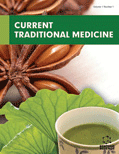Abstract
Background: The plant species belonging to the genus Boerhavia (Nyctaginaceae) have been used extensively in ethnomedicine and Ayurveda in India. Rakta punarnava and Sveta punarnava are two of the species mentioned in various Ayurvedic formulations. Other species of Boerhavia, though not found in the Indian system of medicine, do hold importance in ethnomedicine systems in India and other countries.
Objective: Boerhavia, a polymorphic genus, has been treated as a single genus encompassing species belonging to a morphologically related genus, Commicarpus. Owing to this taxonomic quandary with regard to the merger or separation of the two genera by different workers, there are different reports on the number of species belonging to this genus. This has further resulted in flawed reporting of ethnomedicinal as well as ethnopharmacological studies. The present review focuses on resolving any confusion regarding taxonomic treatment and highlighting the ethnomedicinal uses supported by ethnopharmacological data and the phytochemistry of Boerhavia and Commicarpus species found in India.
Conclusion: In India, four species of Boerhavia and two species belonging to Commicarpus are found. The literature survey revealed that except for B. diffusa, no other species of Boerhavia has been explored in detail. This presents an opportunity to conduct research on Boerhavia species and find new phytochemicals with promising therapeutic effects.
Keywords: Boerhavia, Commicarpus, taxonomy, ethnomedicinal use, ethnopharmacological appraisal, phytoconstituents.
[http://dx.doi.org/10.1016/j.jep.2016.01.042] [PMID: 26844923]
[http://dx.doi.org/10.31254/phyto.2017.6602]
[http://dx.doi.org/10.1016/j.sajb.2013.02.172]
[http://dx.doi.org/10.3732/ajb.94.5.856] [PMID: 21636455]
[http://dx.doi.org/10.1002/tax.593018]
[http://dx.doi.org/10.1016/j.sajb.2012.09.009]
[http://dx.doi.org/10.1016/j.fitote.2018.02.021] [PMID: 29477305]
[http://dx.doi.org/10.1155/2014/808302] [PMID: 24949473]
[http://dx.doi.org/10.1016/j.jep.2014.08.005] [PMID: 25153021]
[http://dx.doi.org/10.1155/2015/892947] [PMID: 26114117]
[http://dx.doi.org/10.1186/s12906-019-2605-6] [PMID: 30606178]
[http://dx.doi.org/10.1186/s13002-019-0285-4] [PMID: 30709360]
[http://dx.doi.org/10.1016/j.jep.2014.05.043] [PMID: 24892834]
[http://dx.doi.org/10.2147/JIR.S167789] [PMID: 30122972]
[http://dx.doi.org/10.3897/phytokeys.102.24380] [PMID: 30002597]
[http://dx.doi.org/10.1515/znc-2004-1-201] [PMID: 15018042]
[http://dx.doi.org/10.1080/14786419.2015.1013470] [PMID: 25699473]
[http://dx.doi.org/10.3390/medicines5020053] [PMID: 29895720]
[http://dx.doi.org/10.1016/j.jep.2017.09.007] [PMID: 28917974]
[http://dx.doi.org/10.7897/2277-4572.034177]
[http://dx.doi.org/10.1007/978-0-387-70638-2]
[http://dx.doi.org/10.3109/13880206809083355]
[http://dx.doi.org/10.1111/j.1365-2028.2007.00867.x]
[http://dx.doi.org/10.1016/S0378-8741(00)00178-1] [PMID: 10904173]
[http://dx.doi.org/10.1111/jphp.12833] [PMID: 29023794]
[http://dx.doi.org/10.1016/j.phytol.2013.07.001]
[http://dx.doi.org/10.1016/j.jtcme.2019.02.002] [PMID: 31956558]
[http://dx.doi.org/10.1248/cpb.37.3214]
[http://dx.doi.org/10.1248/cpb.36.2289]
[http://dx.doi.org/10.1248/cpb.39.1863]
[http://dx.doi.org/10.1177/1934578X1100601121] [PMID: 22224280]
[http://dx.doi.org/10.1055/s-2005-871282] [PMID: 16254824]
[http://dx.doi.org/10.1248/cpb.c12-01081] [PMID: 23727777]
[http://dx.doi.org/10.1021/jm061450q] [PMID: 17341062]
[http://dx.doi.org/10.1021/np300899w] [PMID: 23914900]
[http://dx.doi.org/10.1021/np060073h] [PMID: 16792408]
[http://dx.doi.org/10.1016/0031-9422(90)80156-B]
[http://dx.doi.org/10.1002/pca.869] [PMID: 16315490]
[http://dx.doi.org/10.1177/0748233714567183] [PMID: 25614579]
[http://dx.doi.org/10.1080/14786410600906194] [PMID: 17365699]
[http://dx.doi.org/10.1080/14786419.2021.1920586] [PMID: 33957820]
[http://dx.doi.org/10.1021/np960453a] [PMID: 8946741]
[PMID: 4464253]
[PMID: 22459462]
[http://dx.doi.org/10.1248/cpb.39.1551] [PMID: 1934177]
[http://dx.doi.org/10.1002/chin.198934353]
[http://dx.doi.org/10.1016/j.jep.2003.12.013] [PMID: 15036478]
[http://dx.doi.org/10.2202/1553-3840.1533] [PMID: 22754925]
[http://dx.doi.org/10.1007/s13530-018-0367-z]
[http://dx.doi.org/10.1016/j.biopha.2018.07.053] [PMID: 30119178]
[http://dx.doi.org/10.1016/j.fct.2010.05.047] [PMID: 20553784]
[http://dx.doi.org/10.3109/13880209.2014.971382] [PMID: 25864706]
[http://dx.doi.org/10.1111/j.1745-4514.2010.00477.x]
[http://dx.doi.org/10.1371/journal.pone.0019628] [PMID: 21625488]
[http://dx.doi.org/10.3109/19390211.2015.1036186] [PMID: 26268727]
[http://dx.doi.org/10.1093/ecam/nep192]
[http://dx.doi.org/10.1016/j.jep.2015.06.049] [PMID: 26151242]
[http://dx.doi.org/10.1080/08923970802702036] [PMID: 19555203]
[http://dx.doi.org/10.1017/S0007114513000561] [PMID: 23591029]
[http://dx.doi.org/10.1016/j.biopha.2016.12.114] [PMID: 28068633]
[http://dx.doi.org/10.1371/journal.pone.0096220] [PMID: 24788441]
[http://dx.doi.org/10.1016/j.biopha.2018.09.114] [PMID: 30372810]
[http://dx.doi.org/10.1016/j.jff.2015.06.004]
[http://dx.doi.org/10.4103/0975-9476.146545] [PMID: 26166999]
[PMID: 20192578]
[http://dx.doi.org/10.1016/j.cbi.2013.09.007] [PMID: 24060680]
[http://dx.doi.org/10.1016/j.jep.2009.08.041] [PMID: 19723573]
[http://dx.doi.org/10.1016/j.jep.2005.08.006] [PMID: 16171960]
[http://dx.doi.org/10.5530/pj.2018.2.42]
[http://dx.doi.org/10.1016/j.fjps.2017.12.001]
[PMID: 25767751]
[http://dx.doi.org/10.1186/1475-2875-9-124] [PMID: 20462416]






























